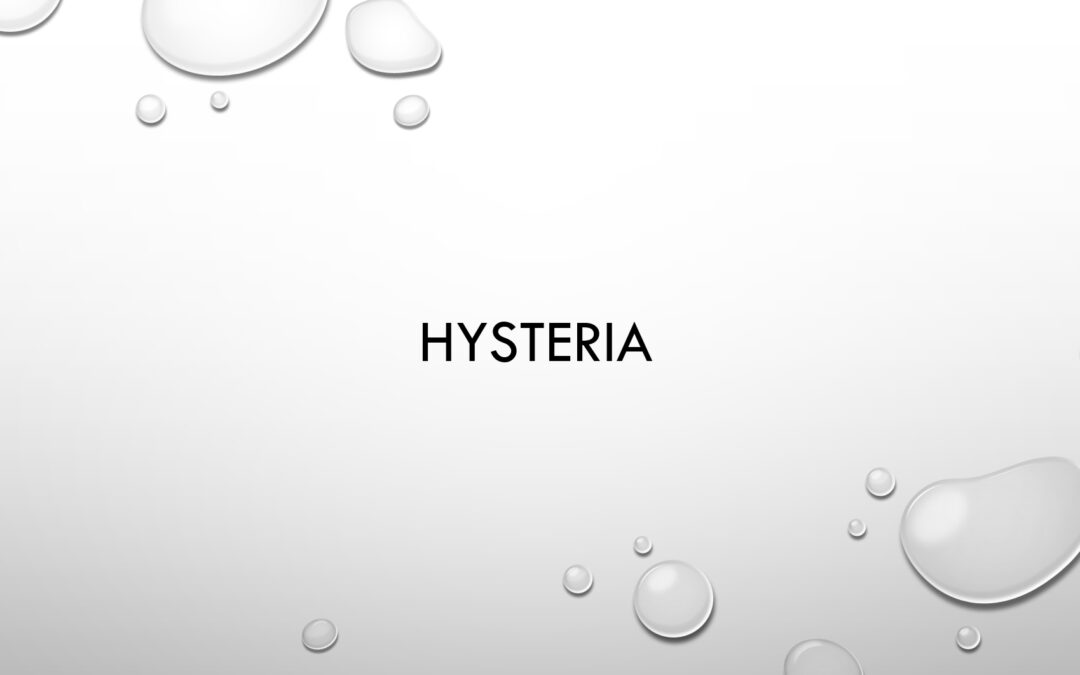Introduction:
Hysteria, also known as conversion disorder, is a complex and often misunderstood condition that affects individuals both physically and psychologically. In this article, we will explore the various aspects of hysteria, including its causes, symptoms, and available treatment options. By shedding light on this condition, we aim to promote understanding and provide guidance to those who may be affected by it.
I. Causes of Hysteria:
Hysteria can be triggered by a combination of psychological, environmental, and genetic factors. Some common causes include:
Traumatic events: Individuals who have experienced severe emotional or physical trauma, such as abuse, accidents, or loss of a loved one, may be more prone to developing hysteria.
Stress and anxiety: Excessive stress and anxiety can manifest as physical symptoms, leading to the development of hysteria. High levels of stress can disrupt the normal functioning of the nervous system.
Underlying mental health conditions: Individuals with pre-existing mental health disorders, such as depression, anxiety disorders, or personality disorders, may be at a higher risk of developing hysteria.
Cultural and societal influences: Sociocultural factors, such as societal expectations, family dynamics, and cultural beliefs, can contribute to the development of hysteria.
II. Symptoms of Hysteria:
Hysteria often presents itself through a wide range of physical symptoms that cannot be attributed to any specific medical condition. These symptoms can include:
Paralysis or weakness in limbs
Seizures or convulsions
Loss of sensation or numbness
Unexplained vision or hearing problems
Difficulty swallowing or speaking
Episodes of unresponsiveness or “blackouts”
Tremors
Psychogenic non-epileptic seizures (PNES)
It is essential to note that the symptoms experienced by individuals with hysteria are genuine and can be severely debilitating, even though they do not have an identifiable medical cause.
III. Treatment Options for Hysteria:
The treatment of hysteria typically involves a multidisciplinary approach, addressing both the physical and psychological aspects of the condition. Here are some common treatment options:
Psychotherapy: Talk therapy, such as cognitive-behavioral therapy (CBT) and psychodynamic therapy, can help individuals understand and address the underlying emotional and psychological factors contributing to their symptoms. Therapists work with patients to develop coping strategies and provide support throughout the recovery process.
Physical therapy: Physical therapy techniques, including exercise, stretching, and rehabilitation, can help individuals regain control over their physical symptoms. Physical therapists assist patients in strengthening muscles, improving coordination, and managing pain.
Medications: In some cases, medications such as antidepressants or anti-anxiety medications may be prescribed to manage underlying mental health conditions that contribute to hysteria. However, medication alone is typically not sufficient for complete recovery and is often combined with other forms of treatment.
Stress management techniques: Learning stress management techniques, such as relaxation exercises, mindfulness, and breathing techniques, can help individuals reduce their overall stress levels, which may alleviate symptoms of hysteria.
Education and support: Education about hysteria and its treatment can empower individuals to better understand their condition and actively participate in their recovery. Support groups and online communities can provide a valuable platform for individuals to share experiences, find support, and exchange coping strategies.
Conclusion:
Hysteria, or conversion disorder, is a complex condition that affects individuals both physically and psychologically. By understanding the causes, symptoms, and treatment options available, we can work towards destigmatizing hysteria and providing support to those affected. A comprehensive approach, including psychotherapy, physical therapy, medication, stress management, and support, can help individuals.




